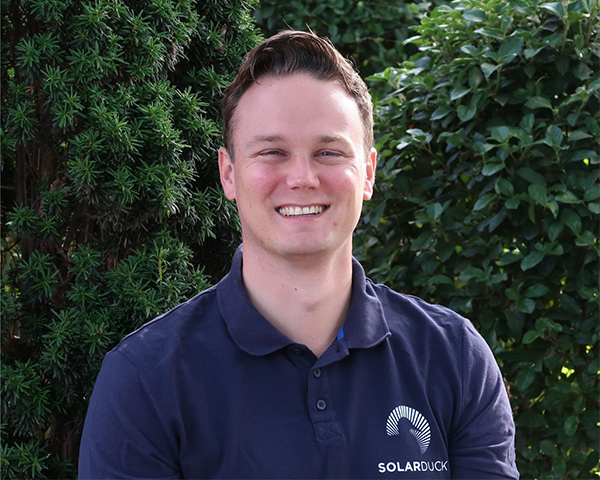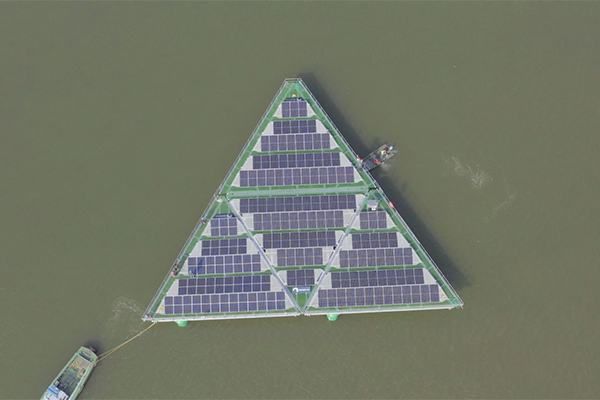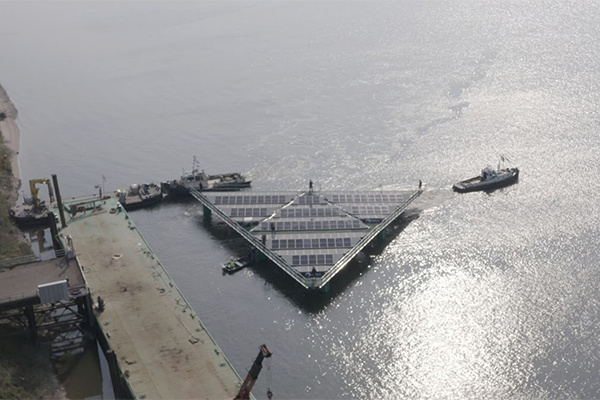Interview with Shibuya’s Startup Visa Holder: Meet the Dutch founder developing offshore floating platforms for Japan

Olaf de Swart is a co-founder at the renewable energy startup SolarDuck who is keen on bringing offshore solar energy to address Japan’s energy problem. To do that, he has been granted a Shibuya Startup visa.

Hi, Olaf. How did you become an entrepreneur in the first place?
I studied aerospace engineering and graduated with a degree in flexible solar panels. After graduation, I spent 10 years in the maritime industry as a part of the R&D team although my passion has always been solar energy.
The idea to combine solar energy with maritime technology was born after brainstorming sessions with my then-colleagues-turned-co-founders. What bound us together was our deep-rooted love for solar energy and the passion to have an impact by converting complex technology into simple things which can be used by many around the world. We started working on evenings and weekends under the safety net of full-time jobs and I was the first one who said goodbye to the corporate job.
I never thought myself to be a risk taker and yet I’m happy I took a leap. In summer 2020, Katapult Ocean Accelerator invested in our startup that fueled our expansion strategy to the potential markets.
As of now, we have a global team of eight people, residing in the Netherlands, Norway and UK.
Each of us brings a complementary skill set on board and also has mutual respect for each other’s capabilities.

Could you please tell us more about your startup?
SolarDuck is a renewable energy startup developing solutions to mass produce electricity offshore. Solar energy is the biggest energy source of the future and already the cheapest renewable energy option. By providing offshore solar power, we tap into an abundant source of energy without visual environmental pollution and compromising scarce land.
Our startup’s name derived from a ‘duck curve’ graph, solar power’s greatest challenge with a duck-looking shape. Although more solar energy comes online during the daytime hours, there is a low demand for utility electricity which drastically increases after the sunset despite solar energy declining. We hope our solution will alleviate its limiting factor for getting more solar energy on the grid by providing the ability to supply power directly to where the demand is, densely populated areas such megacities and high energy intensity industrial sites.

What did you choose a Japanese market for your expansion plans?
70% of Japan’s territory is covered with mountains. Construction of energy plants inland is very expensive since it requires a lot of civil work to get the land cleared and water retention ponds built. The largest solar energy plant in Japan produces around 100 megawatts, a very low number compared to other countries. By going offshore we can alleviate a lot of these issues and that makes Japan a perfect case for SolarDuck’s product.
In the coming years, we are planning to develop a cost-effective competitive energy solution for Japan. Together with a local partner, we are already working on developing Japan’s first offshore floating solar plant. The idea is to have a 17×17 meters floating platform with 40 solar modules on top that can generate about 16 to 20 kilowatts. These platforms can be connected into plants of up to 10 MW in size. If combined into solar farms, its capacity can top 500 megawatts.
Why did you decide to apply for a Shibuya Startup visa?
If you want to start a company in Japan, you need to have a local presence. There are certain costs associated with setting up a business so before you do that you’d want to make sure it is a suitable market for your product. Startup visa is the best way to look for strategic partners and have discussions with all interested parties, including local governments, and establish a solid pipeline before involving bigger costs.
I sent the first email to the Shibuya Welcome Service in December 2020 and officially applied in May 2021. Responses were very quickly and the whole process took less than a month. I received good news a week after an assessment interview with jury members. The next stage is to get a Certificate of Eligibility (CoE) but due to Japan’s state of emergency it might take a bit longer for this document to get issued.
What is your plan once you land in Japan?
We already have a Japanese partner company in charge of project development. The first project is always the most complex and I need to find material suppliers, partners for installation processes and of course, investors. Once the proof in the local market is in place these partners can help scale the technology to its full potential.
I would like to see if offshore floating solar renewables make a large contribution to the Japanese energy supply. To do that it is required to involve the relevant governmental offices. For example the Japan’s Ministry of Economy, Trade and Industry (METI) plays a big role in the development of renewable energy in Japan. While SolarDuck aims to be directly competitive with current electricity and Feed in Tariff rates in Japan, there may be some limitations in the implementation for offshore floating solar farms. With METI I would like to discuss the potential bottlenecks and develop solutions to solve them.
Currently, there’s no technology certification in place in Japan, and globally, to regulate offshore floating solar plants. We hope we can contribute to making regulations to help develop this market for the long term and leap to a gigawatt scale.
As you can imagine with all these tasks ahead of us my agenda for the first few months is quite full. I am looking forward to taking up the challenge of supporting Japan’s transition to Net Zero.

